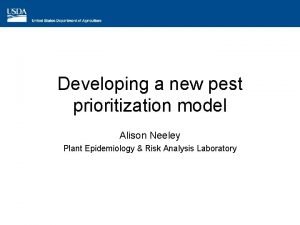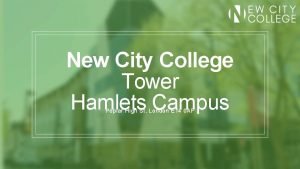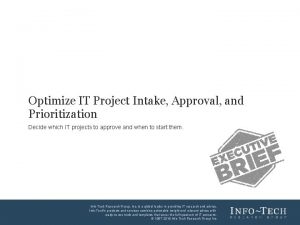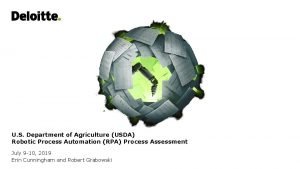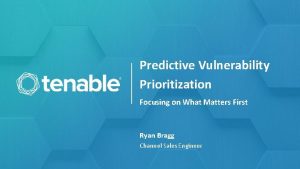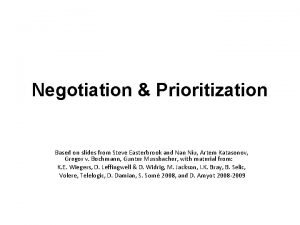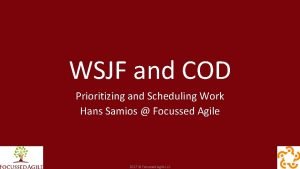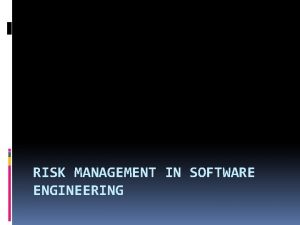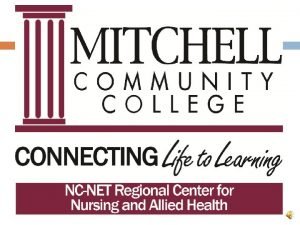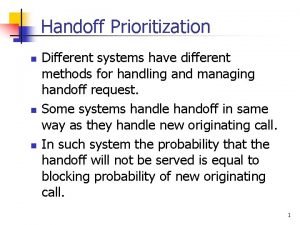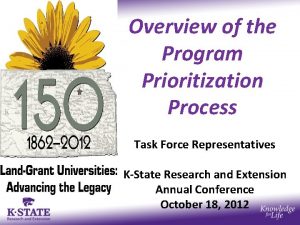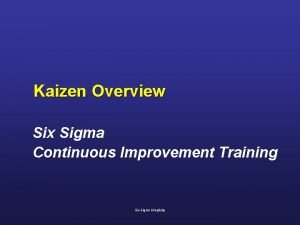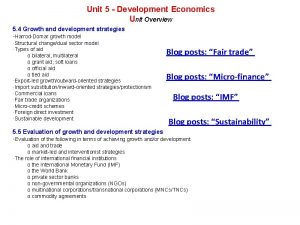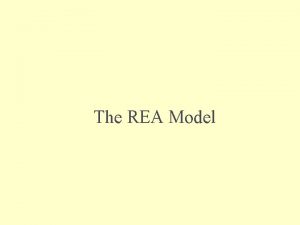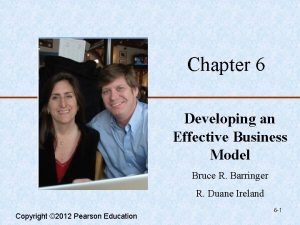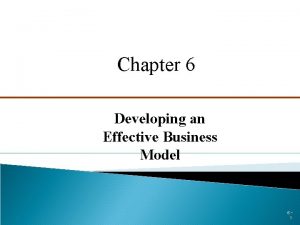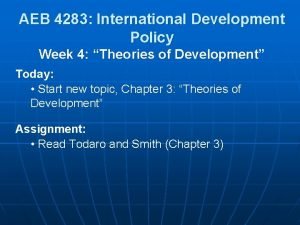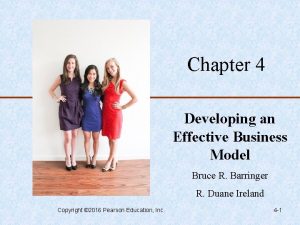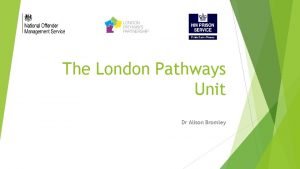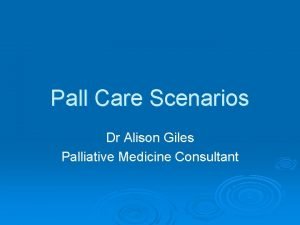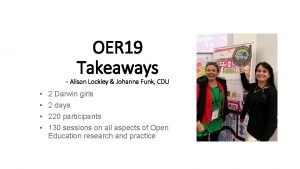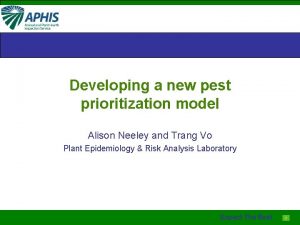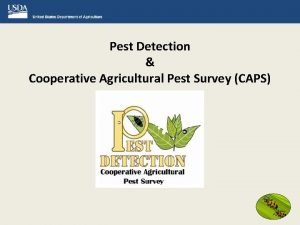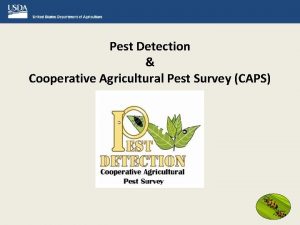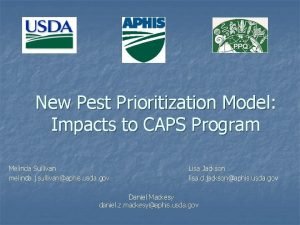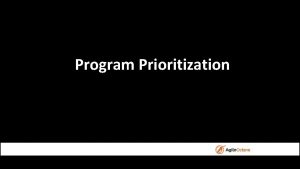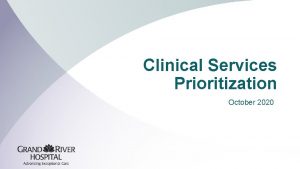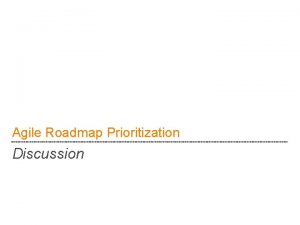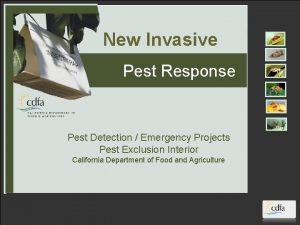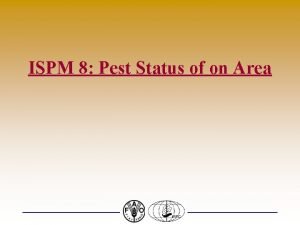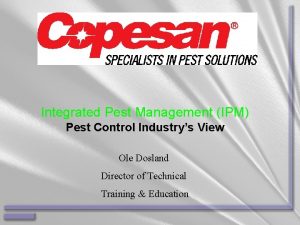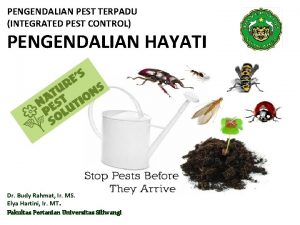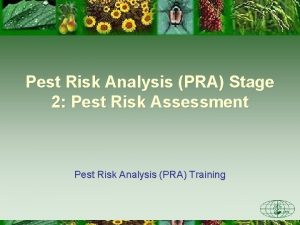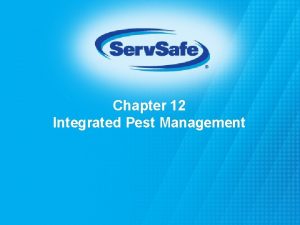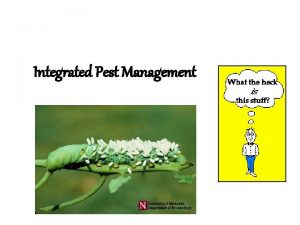Developing a new pest prioritization model Alison Neeley





























- Slides: 29

Developing a new pest prioritization model Alison Neeley Plant Epidemiology & Risk Analysis Laboratory

Analytical Hierarchy Process (AHP) At the time of its adoption the AHP was one of the few available published techniques for prioritization

Advantages of the AHP • Useful decision tool for complex problems • Methodology is relatively simple • Both qualitative and quantitative information can be compared • Process is intuitive and easy for most decision-makers to understand

Disadvantages of the AHP • Highly subjective – Results can be inconsistent – Subject to a high degree of expert bias • Criteria must be independent • Not integrated with other PPQ risk assessment methods • Difficult to validate • Labor intensive

Disadvantages of the AHP for CAPS • Results often seemed to depend on analyst/expert • Comparison between pest groups suspect • Consequences of introduction (economic/ environmental impacts) are a function of the biology of a pest, not an independent criteria • No way to look at regional differences for pest risk • Analysis based on scientific criteria was not separated from criteria based on policy • Difficult to validate

Is there a better model to prioritize pests? A pest prioritization process that would improve on the existing AHP process should be: – Data driven – Objective – Rapid – Use proven pest prioritization techniques – Use relevant PPQ data and methods * PPQ’s Weed Risk Assessment Model

PPQ’s Weed Risk Assessment Process WRA Guidelines • Very successful tool for evaluating the “invasive” potential of plants • Widely evaluated, tested, and validated • Adopted by other stakeholders

New Pest Prioritization Model Goal: Develop an accurate & quick pest prioritization process that: – Relates analysis of pest biology to potential economic and environmental consequences – Minimizes expert bias – Appropriate for different pest types – Can be tested and validated – Separates analysis based on scientific information from that based on policy

Pest Ranking Model (CAPS) Value at Risk Impact Potentia l of Pest Predictive model (Physical loss) - Spread - Damage potential - Mitigating factors Geographic Potential Host Range (Value of hosts) Entry Potential of Pest Total Score Likelihood of entry

Predictive Model for Impact Potential • Currently 2 models: arthropods and pathogens • Developed a set of questions we think will be predictive of impact – Establishment & spread potential – Damage Potential – Mitigating Factors • Developed Guidance for answering questions consistently

Arthropod Model • Model Template • Guidance Document

Developing Predictive Model for Impact Potential • Identified about 100 non-native pests that have become established in the United States • PERAL economics team is evaluating each pest in terms of observed impacts • Pests grouped into three categories: – major/high impact pest – minor pest – non-pest

Arthropod Model • List of Pests

Developing Predictive Model for Impact Potential • Currently analyzing these trial pests as if they are not present in the United States to determine which questions are best at predicting impact • Team meets weekly to review each assessment and to check for inter-assessor consistency

Arthropod Model • Completed Assessment

Developing Predictive Model for Impact Potential: Scoring System Using dataset we will… • Assess the explanatory power of every question by comparing results of each assessment to actual observed impact – Eliminate questions with no predictive power • Develop Scoring System – Weight predictive questions more – Idea is to maximize risk score separation • ANOVA

Invasiveness elsewhere (X 2=83. 0***) 34 F 34 34 F E D E B E C Yes No 34 29 23 27 Yes B A Geophyte (X 2=0. 1) 34 Self-compatible (X 2=5. 3) No Forms seed banks (X 2=8. 3**) 34 30 Yes No ? 21 6

EXAMPLE • Weed Risk Assessment : Falcaria vulgaris

Developing Predictive Model for Impact Potential: Scoring System • Logistic regression – Type of statistical analysis that uses continuous and discrete variables to predict the probability of occurrence of a discrete event àProbability of being a Major Pest àProbability of being a Minor Pest àProbability of being a Non-pest • Different pest groups can be ranked together (even though they have different criteria) based on their likelihood of being a Major/High impact pest

The Logistic Regression Model (PPQ Weed Risk Assessment) 1 0. 9 0. 8 Probability 0. 7 P(Maj-I) P(Min-I) P(Non-I) 0. 6 0. 5 0. 4 0. 3 0. 2 0. 1 0 -4 -3 -2 -1 0 1 2 3 4 5 Composite Risk Score (0. 2356*ES – 0. 6019*Imp) 6 7 8 9

Description of Uncertainty • Summarize & describe uncertainty for each risk element – How confident are we in our results? – Would additional/ better information be likely to change our results?

Validating the Model Using a separate dataset we will… • Assess the ability of the weighted model to identify major, minor, and non-pests – Identify an additional 100 or so non-native arthropods, currently established in the United States – Assess as if they are not in the United States using weighted model – Determine how well weighted model predicts actual, observed impact

2013 Accomplishments • Identified 100 arthropods to analyze for developing the model • Finalized the set of initial questions for arthropod model • Developed detail guidance for answering model questions in order to ensure consistency in answering questions

2013 Accomplishments • Analyzed & reviewed just over 50 arthropods • Developed work plan and position descriptions for research assistant (biological science technician equivalent) and statistician (research associate) • Hired research assistant to begin organizing pest reports and data • Advertised for statistician and selected candidates (interviews will begin as soon as NC State approves choices)

Immediate Next Steps • Finish analyzing arthropods • Statistical analysis of arthropod dataset and development of weighting/scoring system • Finalize the set of initial questions for Plant Pathology model • Finish guidance for answering each of the questions • Finalize list of plant pathogens pests to analyze

2014 Target Dates Task Target Completion Date Finish Plant Pathogen model questions and guidance March 2014 Complete analysis of arthropods March 2014 Statistical analysis of arthropods May 2014 Complete preliminary arthropod model June 2014 Complete analysis of plant pathogens August 2014 Pilot test model with arthropods on current AHP list August 2014 Run new arthropods through model September 2014 Statistical analysis of plant pathogens September 2014 Complete preliminary arthropod model October 2014 Pilot test plant pathogen model November 2014 Run new pathogens through model December 2014

Long-term Plan Next year (2015): • Validate arthropod and plant pathogen models • Develop model for nematodes • Develop model for mollusks Develop web-based system for using model

Pest Prioritization Modeling Team • PERAL – Economists: Alison Neeley, Trang Vo – Entomologists: Jim Smith, Leslie Newton, Glenn Fowler, Heather Moylett, Cynthia Landry – Plant Pathologists: Heather Hartzog, Larry Brown, John Rogers • CPHST CAPS Core Team – Lisa Jackson, Melinda Sullivan, Daniel Mackesy, Talitha Molet • Others – Andrea Lemay, PPD interns, CIPM

Questions? ?
 Pest control alison
Pest control alison Tower hamlet college
Tower hamlet college Project intake process best practices
Project intake process best practices Rpa prioritization matrix
Rpa prioritization matrix Predictive vulnerability
Predictive vulnerability Damian2005 trick
Damian2005 trick Problems with wsjf
Problems with wsjf Delegation model
Delegation model Risk management software engineering
Risk management software engineering Abcd prioritization nursing
Abcd prioritization nursing Prioritization
Prioritization Prioritization
Prioritization Ticket prioritization
Ticket prioritization Program prioritization process
Program prioritization process Kaizen alternatives
Kaizen alternatives Developing new products and services
Developing new products and services Harrod domar model economics
Harrod domar model economics When developing an rea model
When developing an rea model Barringer business model
Barringer business model Developing an effective business model
Developing an effective business model Harrod domar growth model
Harrod domar growth model Barringer and ireland model
Barringer and ireland model Cay ryan murray
Cay ryan murray Alison voice leeds
Alison voice leeds Alison bromley psychologist
Alison bromley psychologist What is the area
What is the area The real gianna
The real gianna Alison crane
Alison crane Dr alison giles
Dr alison giles Oer
Oer
